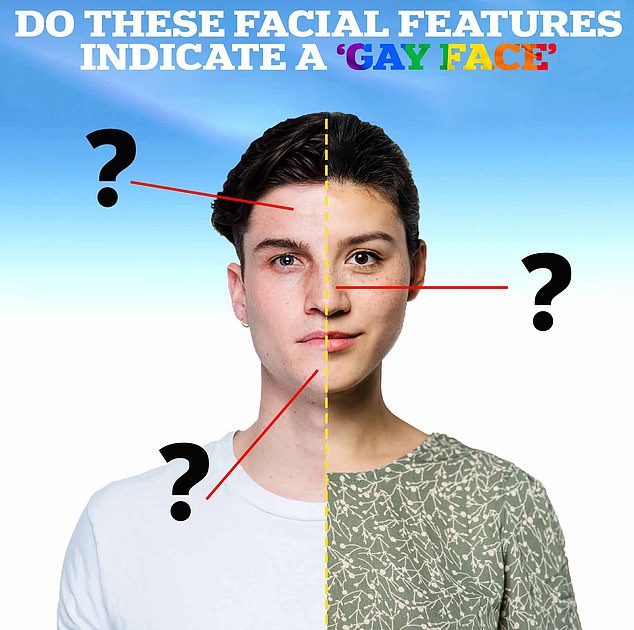Do you think you can tell if a person is gay or straight just by looking at them? Well, you might be right, experts say.
Two science educators have analyzed the research behind the so-called “gay face,” the theory that homosexuals have certain facial characteristics in common.
And according to science, it’s a real thing: some of us detect it better than others.
The phenomenon was investigated by Mitch Moffit, a biologist, and Greg Brown, a science teacher, both gay, in an attempt to uncover the facts.
And surprisingly, the couple discovered that ‘gay face’ has nothing to do with looking masculine or feminine.
Gay face is a term used by some members of the LGBT community to be able to detect that someone is not heterosexual simply by looking at their face and, according to experts, it is a real thing.
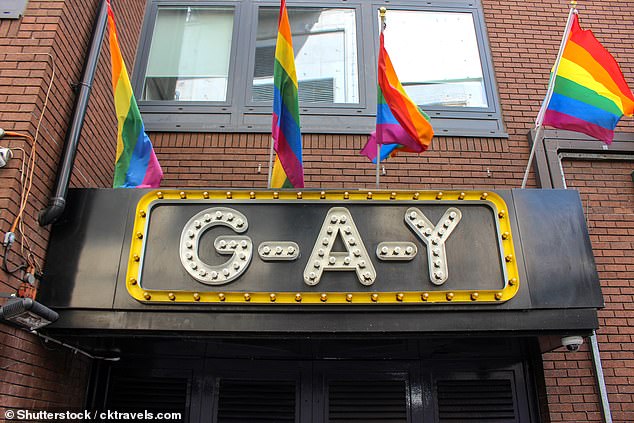
Multiple studies spanning over a decade have explored the phenomenon and also who is best at detecting the characteristics that make a face “gay.”
Gay face has been the subject of research for more than a decade.
Early studies dating back to 2011 found that gay men had more symmetrical faces than their heterosexual counterparts.
But as Brown points out, these did not take into account the different grooming practices or cosmetic procedures more common among gay men.
on a youtube shorten which aired earlier this month on his AsapSCIENCE channel, which has been viewed more than 100,000 times, said: ‘We gays like to pluck our eyebrows and keep our beards nice and trimmed.
“I know a lot of gay men who get Botox and fillers to try to make their faces symmetrical.”
It wasn’t until 2015, when researchers began using software to map the physical structure of faces in fine detail, that more underlying patterns began to form.
Moffit said this research found that “homosexual men had shorter noses and larger foreheads compared to their heterosexual counterparts.”
He added: “Research on lesbian faces found that, on average, the lesbians in the study had more upturned noses and smaller foreheads than their heterosexual counterparts.”
A particularly interesting aspect of this study was that these gay faces were not linked to people who rated these faces as masculine or feminine.
“So, a gay man can still have a very masculine-looking face but he can also be considered to have a gay-looking face and vice versa for lesbians,” Moffit said.
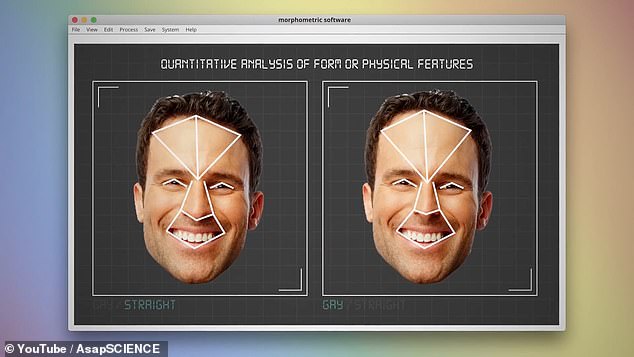
YouTube creators Mitch Moffit, a life sciences expert, and Greg Brown, a science teacher, recently spoke out about the trend, including a study that found gay men had shorter noses and larger foreheads compared to their heterosexual counterparts.
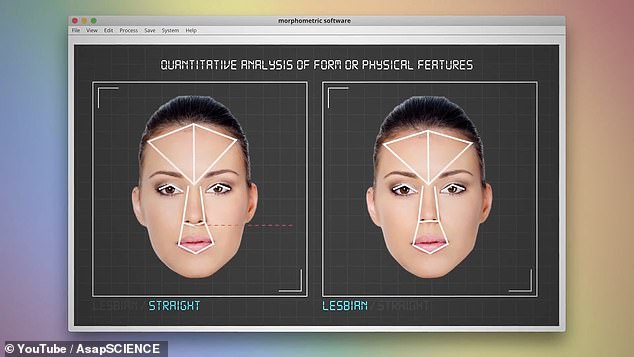
The same team found that lesbians had, on average, more upturned noses and smaller foreheads than heterosexuals.
This suggested that gay face was itself an independent variable and not simply linked to perceptions of masculinity or femininity.
Then the study was taken to another level. in 2021 when Spanish researchers took images of people’s faces and then transformed them to exaggerate features previously identified as gay faces, such as the shape of the nose and forehead.
These images were crafted on a scale that ranged from the person’s original face to increasingly exaggerated homosexual features.
Moffit explained that when volunteers evaluated these faces they found that “the more exaggerated the homosexual features, the more likely the volunteers were to think that person was gay.”
This suggested that having a “gay face” was more of a spectrum with varying degrees than a simple binary of having it or not.
The last piece of research analyzed involved scientists feeding an AI 35,000 images from dating sites of gay and straight people.
This AI was able to deduce whether a man was gay with 81 percent accuracy. The algorithm was also able to guess whether a woman was gay with 74 percent accuracy.
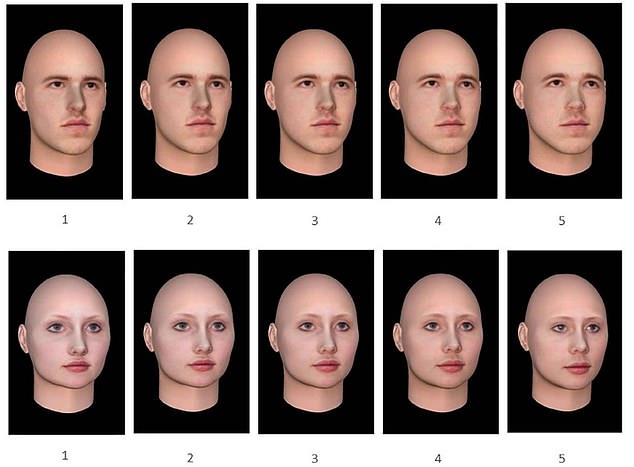
Examples of computer-generated images used in the 2021 Spanish study. Images are increasingly modified to express homosexual traits from left to right, with 1 being the most heterosexual and 5 being the most gay.
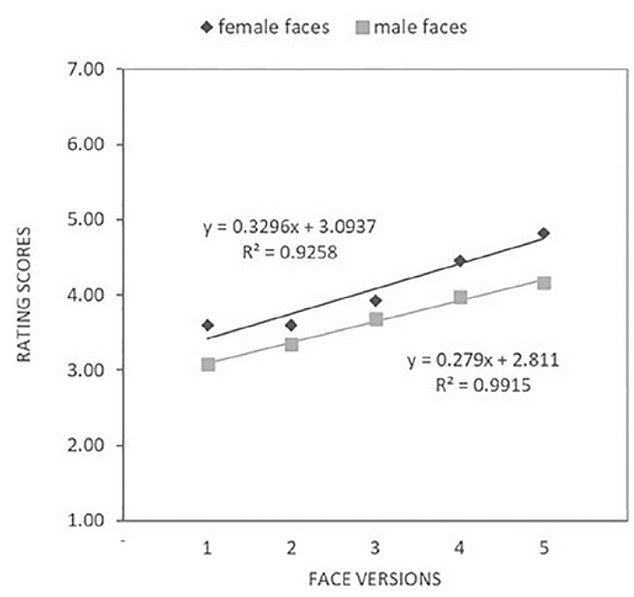
When the volunteers examined it, the more exaggerated the homosexual characteristics were, the more likely people were to think that person was gay. This suggested that having a ‘gay face’ was more of a spectrum with varying degrees than a simple binary of having it or not.
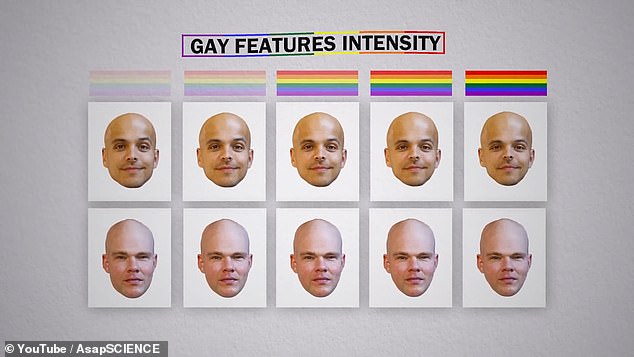
Moffit and Brown, who put their own faces on some of the trends analyzed by the scientists, said it is crucial to remember that studies showed trends and that individuals were found who were gay but did not have a “gay face” and vice versa.
It also found that gay men had larger foreheads and narrower jaws, while lesbians had smaller foreheads and larger jaws compared to their heterosexual counterparts.
But not all of us are equally good at detecting a gay face equally.
Perhaps not surprisingly, homosexuals themselves were more adept than their heterosexual counterparts.
But women, of all sexualities, were also on average better than men at detecting gay faces, particularly when looking at gay men with an overall accuracy of 75 percent.
This is consistent with broader research showing that women are generally better than men at facial processing, the term scientists give for the process of obtaining information based on looking at people’s faces.
But another interesting aspect of the research found that people who were less prejudiced against gays were better at detecting gay faces.
Theoretically, this is because homophobic people may have a very narrow view of what a gay person is “supposed” to be and dismiss people who don’t fit this stereotype as straight.
But when it comes to why gay people have differently shaped faces, scientists aren’t sure.
One theory suggests that genetics could be a factor and that differences in hormone levels could influence both a person’s sexuality and their facial structure.
Brown also highlighted some of the possible limitations of this research and how it could be used against homosexuals.
“The genuine concern and criticism that this type of investigation can raise is worth raising,” he said.
‘If this is going to be liked it will be the technology used as a weapon against us, queer people.
‘Scanning people’s faces and then classifying them as gay or straight looks like a dystopian movie.
He also highlighted that, although these studies highlight general trends, they are not without exceptions and that people were found who were homosexual but did not have a “gay face” and vice versa.
According to the latest official census data, approximately 3.2 per cent of the population of England and Wales, equivalent to 1.5 million people, identify as non-heterosexual.

